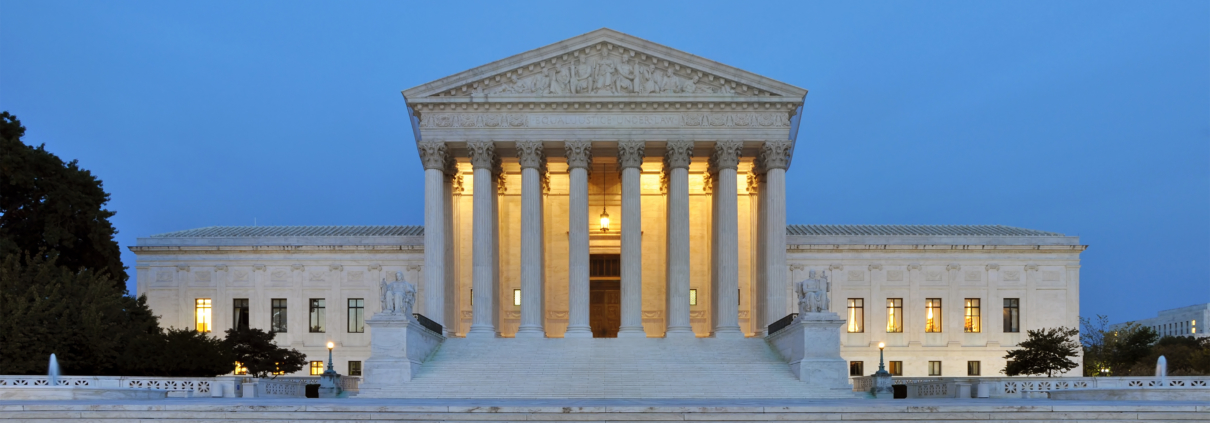Supreme Court Blocks Vaccine Mandate: An Issue of Institutional Competence
By CHHS Extern Jenna Newman
On September 9th, 2021, President Biden first announced the creation of a plan that would require a large number of Americans to receive the COVID-19 vaccination. The Occupational Safety and Health Administration (OSHA) then published the aforementioned vaccine mandate on November 5. The OSHA mandate required workers employed by businesses with at least 100 employees to receive the COVID-19 vaccine, with an exception only allowed for workers who were tested weekly at their own expense and wore a mask each day. The mandate also pre-empted contrary state laws. On January 13, the U.S. Supreme Court stayed OSHA’s COVID-19 vaccine mandate.
The majority on the Court explained that because this order required 84 million Americans to either receive the COVID-19 vaccine or take weekly tests at their own expense, it was not an “everyday exercise of federal power.” The Court further noted that OSHA is tasked with ensuring occupational safety, which includes “safe and healthy working conditions.” The justices speaking for the majority found that this mandate did not set workplace safety standards, rather enacting broad public health measures that went against the original text of the act. They reasoned that “permitting OSHA to regulate the hazards of daily life – simply because most Americans have jobs and face those same risks while on the clock – would significantly expand OSHA’s regulatory authority without clear congressional authorization.” The Court drew a distinction between occupational hazards and risks that occur in the workplace, explaining that COVID-19 is not an occupational hazard that OSHA has the power to regulate. For example, COVID-19 is a universal risk that is present everywhere that people choose to gather, not just in the work-place setting. That is the difference between occupational risks and risks in general.
By contrast, the justices writing for the dissent argued that the OSHA mandate was within the agency’s mission to “protect employees from grave danger that comes from new hazards.” The dissenting justices noted that COVID-19 is a new hazard that poses a grave danger to millions of people, making the OSHA mandate “necessary” to address the dangerous situation. As a result, the dissent found that the majority ruling was at odds with the statutory scheme.
The biggest issue that the case raises surrounds the institutional competence to address the health care crisis. The dissent stated that the underlying dispute “is a single, simple question: Who decides how much protection, and of what kind, American workers need from COVID-19?” The options are either an agency or the Court. While competing arguments exist on both sides, the reality is that the decision is now left up to each individual company. Companies must now weigh the pros and cons of instituting regulations or potentially losing staff. For example, United Airlines and Tyson foods have instituted their own mandates, but others have chosen to not take any action, such as Walmart, Amazon, and JPMorgan Chase.
The institutional competence issue is further shown in the majority opinion in Biden v. Missouri, which was a small win for the Biden administration because it allowed a limited mandate that required health care workers to receive the COVID-19 vaccine if they worked at a facility that received federal funding. Differing significantly from the majority opinion concerning the OSHA mandate, the majority in Biden v. Missouri found that the secretary of health and human services mandate “fell within the authorities that Congress conferred upon him.” The statute that gives authority to the mandate states that the Secretary can make Medicaid and Medicare funds contingent on conditions that “the Secretary finds necessary in the interest of the health and safety of individuals who are furnished services.” Here, the majority found that this limited mandate was within congressional authorization because it ensures that providers are taking to steps to stop the spread of a dangerous virus.
These cases certainly illustrate the challenges that the pandemic has created in interpreting the authority conferred upon agencies by Congress, and what types of regulations go beyond these authorities. In light of the contrasting majority opinions, the institutional competence issue will continue until a consensus is reached on the proper authority of agencies to make vaccine regulations in the workplace.



